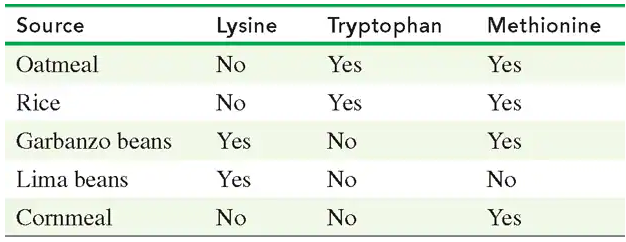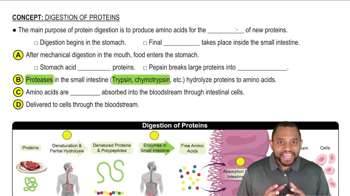Explain why each of the following pairs are complementary proteins:
a. beans and oats

 Verified step by step guidance
Verified step by step guidance Verified video answer for a similar problem:
Verified video answer for a similar problem:



 2:18m
2:18mMaster Primary Protein Structure Concept 1 with a bite sized video explanation from Jules
Start learning